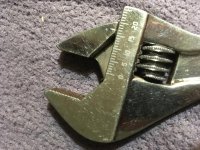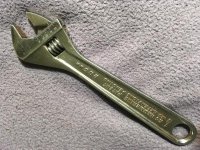I like metric for a lot of reasons, but, I cannot imagine trying to convert to metric in and oil refinery. The pipes and flanges are all SAE. New stuff could be made metric, then you would have to find or make adapters to connect on to old units and lines. Then you would need to stock both types of gaskets and studs. As there are already a zilion thatt would mean 2 zillion. They make some of it. I once connected a bunch of SAE piping to some metric compressors and driers in a aluminum plant. What a pain.
I also once built a trailer for a trailer mounted cone cock crusher. The crusher was metric and the plans for the trailer were in metric. No big deal? LOL. Plan calls out for side rails of a certain size metric wide flange, that works out to 22 1/2" x 11 3/8". Nearest you can get is 24x12. Now you need to adjust everything attached to the side rails. All your cross pieces are the same way. Everything you do need adjustments for the difference in material sizes. Certain spots have to be certain elevations, so the crusher sits right, clears, dumps and receives from conveyors correctly. I used up a lot of pencils and tablets on that job. It worked though.




